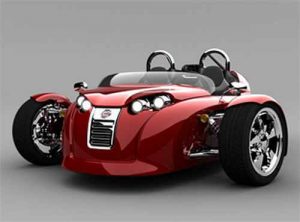4 Ways to Keep More Trades And Maximize Profitability
Many dealers correctly recognize the need to keep more trade-ins to feed their used vehicle inventories.
This trend raises an age-old tension at many dealerships: The new vehicle department typically wants to set the highest trade-in value possible to satisfy the customer and close a deal. The used vehicle department prefers low-balling trade-in values to maximize the retail profit potential on every car from the get-go.
 The solution to this tug-of-war is a more dealership-balanced approach to appraisals that addresses and satisfies the competing interests of all stakeholders—the customer, the new vehicle sales manager, the used vehicle sales manager and the dealer.
The solution to this tug-of-war is a more dealership-balanced approach to appraisals that addresses and satisfies the competing interests of all stakeholders—the customer, the new vehicle sales manager, the used vehicle sales manager and the dealer.
The following appraisal best practices can help dealers achieve this sometimes delicate balancing act:
Validate value. It’s fair to assume that the majority of today’s trade-in customers have spent time researching the value of their vehicle. They have a number in mind when they arrive at your showroom. Many dealers now embrace this customer due diligence as part of their appraisal process, using data from third-party sources, such as KBB.com. The flow goes something like this: The appraiser and the customer walk the vehicle together to examine its features and flaws (e.g., the “silent walk-around). Next, they head to the showroom (or use mobile tools on the lot) to arrive at a trade-in value using data and tools from the third-party sources.
Dealers say the walk-around helps customers recognize the specific items that help or hurt their trade-in value. Likewise, the third-party data, in most cases, largely affirms what customers have already learned about their car’s value when they did their online research. The end result: The customer is less likely to object to the third-party valuation and, if they do, the third-party number typically allows a dealer a little wiggle room to “step up” if necessary.
Know your purchase/retail price parameters. Every decision to “step up” on a trade means you’re “stepping down” on the vehicle’s profit potential as a used retail unit. Given this reality, many dealers are using inventory management tools to help them maximize the retail profit potential on trade-in vehicles. As they appraise trade-ins, they assess the vehicle’s cost-to-market metric. This metric measures the “spread” between the acquisition cost of the vehicle and its prevailing retail price point. Example: If you pay $9,700 for a trade-in, and the average retail price point is $12,175, the cost-to-market ratio is 80 percent. In this scenario, the used vehicle manager knows there’s a $2,425 “spread” to account for any reconditioning costs and the vehicle’s gross profit margin. If the cost-to-market ratio is higher, the “spread” is lower. At many dealerships, this metric becomes an effective way for new and used vehicle managers to agree on appraisal values and understand how their decision will affect the unit’s profitability potential as a retail unit.
Manage appraiser performance. This follows the “inspect what you expect” axiom of our business. There are two key benchmarks dealers use to manage and monitor appraiser performance. First, they’ll examine each appraiser’s look-to-book ratio, or the percentage of appraisals that result in deals. Caution: This figure can be misleading—if I appraise every vehicle for $1 million, my look to book ratio will be 100 percent but the dealership would soon go out of business. The second metric, the appraiser’s average cost-to-market percentage, would reveal whether an appraiser is consistently offering “on the money” appraisals. Taken together, these two metrics ensure appraisers meet dealership-set objectives to keep more trades and ensure their retail profit potential.
Balance the bonus money. The rise of factory bonus money for dealers who meet new vehicle sales targets increases the temptation to “step up” on a trade-in and “step down” on the vehicle’s profit potential as a used retail unit. Some dealers address this risk by recognizing that the bonus money for new vehicle sales wouldn’t be possible without a store’s ability to successfully acquire trade-ins. These dealers apply this bonus money to the pool of gross profits they use to pay new and used vehicle sales managers. Some go further, using the bonus money to offset specific instances where a used vehicle’s profit potential suffered as a result of a decision to “step up” on a trade-in to close the new vehicle deal. Either way, these dealers are creating a collaborative, team-oriented environment where “everybody wins.”
The post 4 Ways to Keep More Trades And Maximize Profitability appeared first on Dale Pollak.








